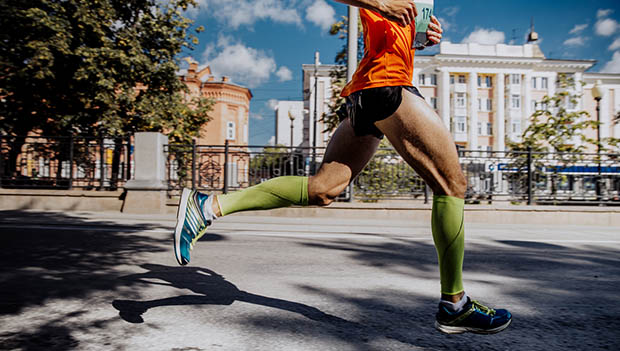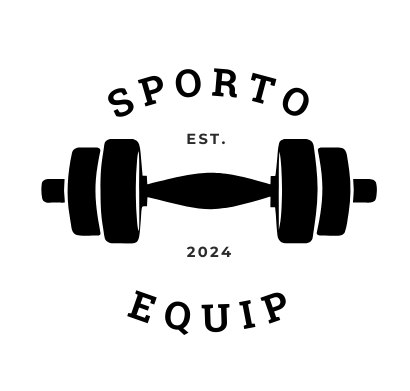
Compression Gear for Recovery: Enhancing Circulation and Reducing Muscle Fatigue
By: Noor-E Sifat Published: 23 Oct 2022
In the ever-evolving world of fitness and wellness, the quest for improved recovery methods is a never-ending pursuit. The ability to bounce back swiftly from rigorous workouts is not just a convenience; it’s a crucial element in enhancing your fitness journey and achieving your health goals. Amid a plethora of recovery techniques, compression gear has emerged as a dynamic ally, bridging the gap between professional athletes and fitness enthusiasts. In this article, we embark on a journey to explore the powerful role of compression gear in post-workout recovery.

As we delve deeper into the world of compression gear, we will unveil how it works, understand its numerous benefits, and explore how it can be seamlessly integrated into your recovery routine. From optimizing blood circulation to reducing muscle fatigue, compression gear can be a transformative element in your pursuit of peak health and fitness. So, let’s explore the science and practicality behind this innovative tool, and discover how it can elevate your recovery game to new heights.
How Compression Gear Works
Compression gear, such as compression sleeves, stockings, or garments, is designed to provide a specific level of pressure to targeted areas of the body. This pressure is typically graduated, meaning it is tighter at the extremities and gradually decreases as it moves up the limb. The primary goal is to improve blood circulation and lymphatic flow, which has a significant impact on recovery.
- Blood Circulation: Compression gear promotes the return of deoxygenated blood from the muscles to the heart. This enhanced circulation ensures that oxygen and vital nutrients are delivered to the muscles more efficiently, aiding in the recovery process.
- Lymphatic Flow: The lymphatic system is responsible for removing waste and toxins from the body. Compression gear can assist in the movement of lymph fluid, reducing swelling and inflammation in the muscles.
- Muscle Stabilization: Compression garments provide support to the muscles and joints, reducing muscle vibration during exercise and promoting muscle stability. This can help reduce the risk of injury.
- Reduced Muscle Oscillation: Compression gear can minimize muscle oscillation, which occurs when muscles contract and expand during physical activity. This, in turn, reduces muscle fatigue.
Benefits of Compression Gear for Recovery
The advantages of using compression gear for recovery are manifold, making it a popular choice among athletes and fitness enthusiasts:
- Quicker Recovery: Improved blood flow and reduced muscle oscillation help speed up the recovery process. This means less downtime between workouts, allowing you to maintain a consistent exercise routine.
- Reduced Muscle Soreness: Compression gear has been shown to reduce muscle soreness and the perception of pain. This is particularly beneficial after intense workouts or endurance activities.
- Enhanced Performance: By stabilizing muscles and reducing fatigue, compression gear can improve exercise performance. Athletes may find that they can push themselves harder and longer with less discomfort.
- Reduced Swelling and Inflammation: Compression garments can help manage post-workout swelling and inflammation, which can be especially beneficial for athletes recovering from injuries or surgeries.
- Lower Risk of Injury: The added support and stabilization provided by compression gear can reduce the risk of injury, making it a valuable tool for both injury prevention and recovery.
- Enhanced Comfort: Many individuals find that compression gear provides a comforting and secure feeling, which can contribute to relaxation and better sleep, a critical aspect of recovery.
Using Compression Gear for Recovery
To effectively use compression gear for recovery, follow these guidelines:
- Wear After Exercise: Compression gear is most effective when worn after a workout. It can be put on immediately following exercise and worn for several hours or overnight, depending on your needs and comfort.
- Size Matters: Choose the right size of compression gear. A proper fit ensures that you receive the maximum benefit from the garment. Most manufacturers provide sizing guidelines to help you find the right fit.
- Graduated Compression: Look for garments that offer graduated compression, with the highest pressure at the extremities and gradually decreasing pressure as it moves up the limb. This design encourages blood flow and lymphatic drainage.
- Consistency Is Key: To experience the full benefits of compression gear for recovery, consistency is essential. Make it a part of your regular post-workout routine to enjoy the advantages it offers.
- Combine with Other Recovery Strategies: Compression gear works well in combination with other recovery strategies like hydration, stretching, and rest. Incorporate it into a holistic approach to optimize recovery.
Choosing the Right Compression Gear
When selecting compression gear, consider the following factors:
- Activity Type: Choose compression gear that suits your specific activities. There are different types of compression gear designed for various sports, so select one that matches your exercise routine.
- Compression Level: Different compression garments offer varying levels of pressure. Consider your individual needs, and if you’re unsure, consult with a healthcare professional or specialist.
- Material: Quality and material can vary between brands. Look for breathable, moisture-wicking fabrics that are comfortable to wear during your post-workout recovery.
- Durability: Invest in compression gear that is built to last. High-quality materials and construction will ensure longevity and sustained effectiveness.
In Conclusion: The Power of Compression Gear for Recovery
In the pursuit of peak fitness and overall well-being, the incorporation of compression gear for post-workout recovery is a game-changer. This dynamic tool, once reserved for elite athletes, has evolved into an accessible resource that can significantly enhance your fitness journey.
Compression gear’s ability to improve circulation, reduce muscle soreness, provide muscle and joint support, and expedite recovery cannot be understated. It’s a valuable asset for both the experienced athlete and the fitness novice.
By embracing the use of compression gear as part of a comprehensive recovery strategy, you unlock the potential for swift recuperation, minimized muscle fatigue, and heightened overall performance. Whether you’re striving for personal fitness goals, recovery from injuries, or simply looking to elevate your well-being, compression gear is your steadfast companion on this exhilarating journey. So, wrap yourself in the benefits of compression gear, and soar to new heights in your pursuit of total health and fitness.
To find more articles about such fitness guide, visit our Recovery & Post Workout!
